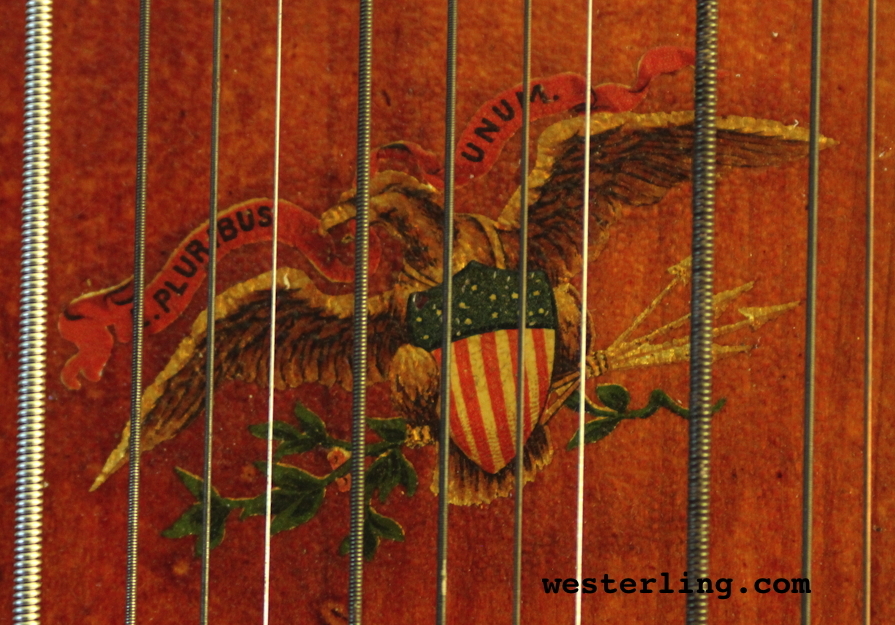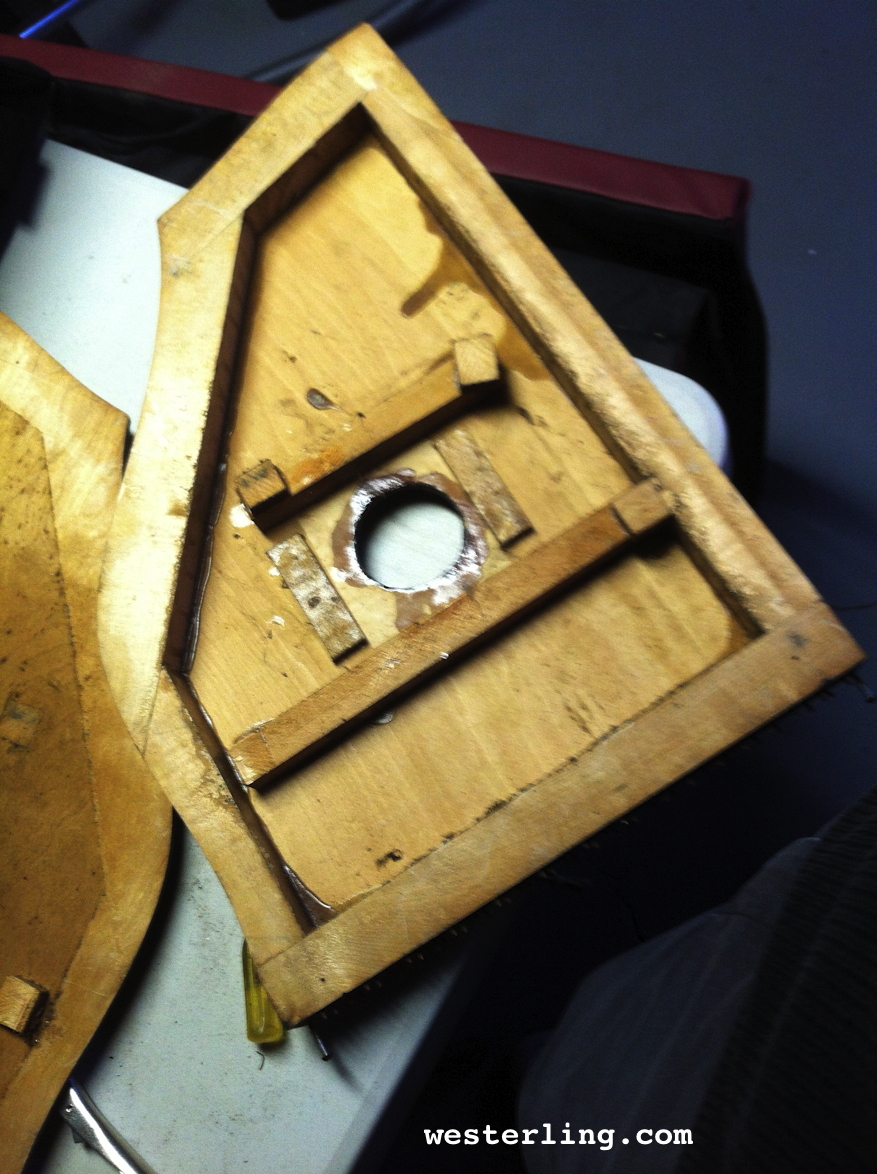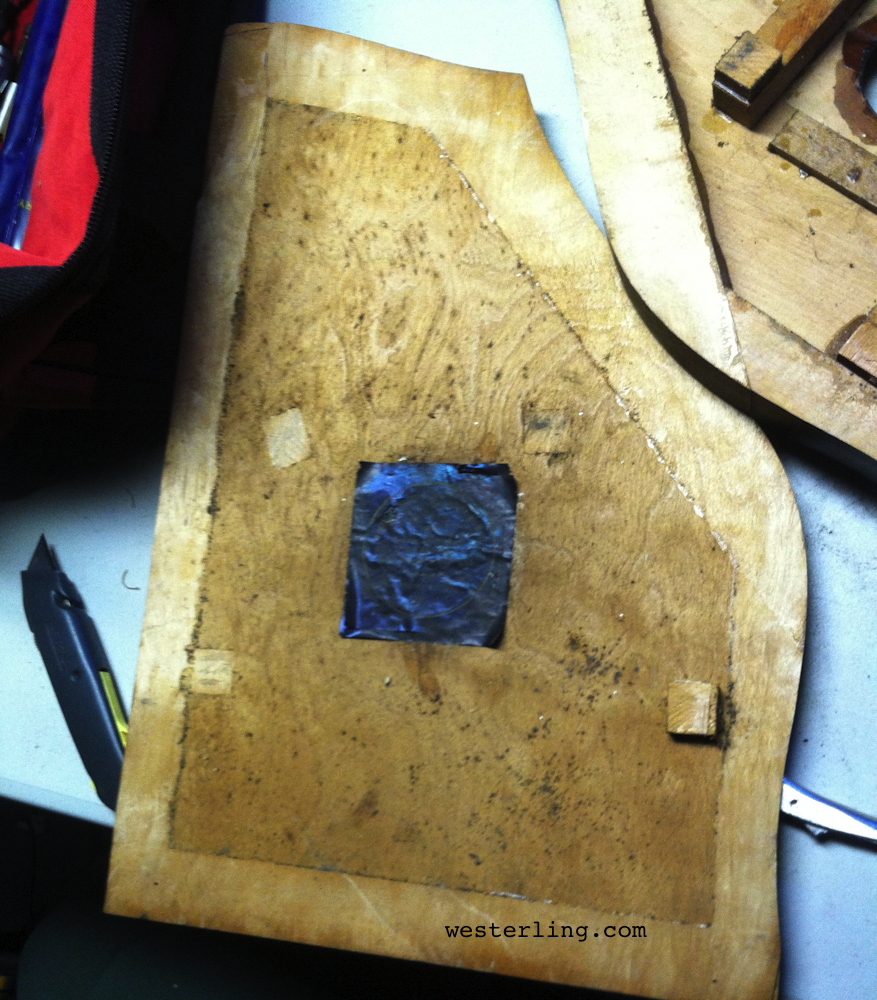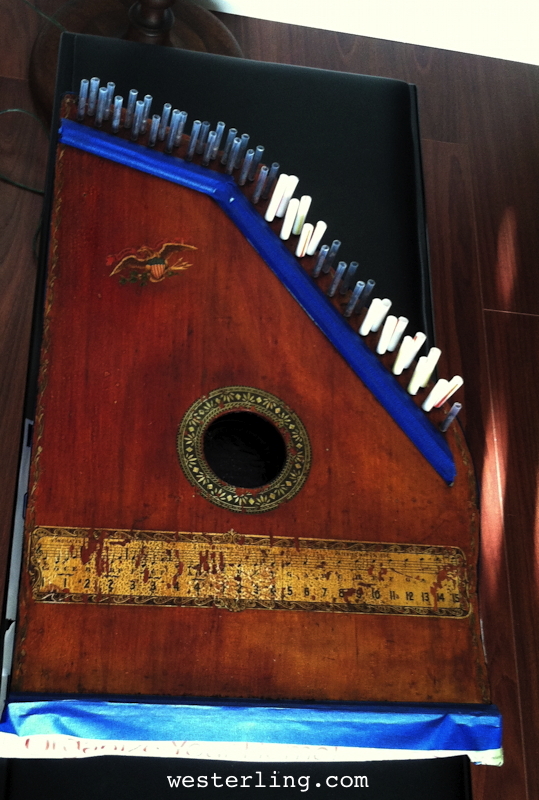New Instrument in my Collection: a 110 year old Mandolin Zither
- Posted by J W
- on Aug, 12, 2017
- in Music / Bassoon
- Blog 7 Comments.
I have just finished restoring a “Mandolin Zither”! It dates from 1900 but despite its age and the interesting history behind the instrument, its not worth very much. Even so, the curious reader or woodworker might enjoy the story below:
This type of instrument was actually invented by Friederich Menzenhauer a German who patented it in 1894. Several Companies in the US made these at the turn of the 20th century, each with their own colors or string arrangements to make theirs unique. Each instrument would usually have a label customized for the area sales company who would sell them locally door-to-door.
Much like vacuum cleaner salesmen, they would go from house to house in poorer areas where people could not afford a piano.
 The instruments were easy to play (they had numbers instead of letters so you didn’t have to read music) and made for an impressive demonstration. Convinced they could make music at home, the buyer would pay a down payment (which probably more than covered the cost of the instrument), and owed three subsequent monthly payments each of about $20. Popular song charts were also available for purchase by mail.
The instruments were easy to play (they had numbers instead of letters so you didn’t have to read music) and made for an impressive demonstration. Convinced they could make music at home, the buyer would pay a down payment (which probably more than covered the cost of the instrument), and owed three subsequent monthly payments each of about $20. Popular song charts were also available for purchase by mail.
It was a bit of a racket since with so many strings they were difficult to keep in tune, so the majority of them were quickly thrown up in to the attic whether or not the following payments were made.
The leading company, Oscar Schmidt was quite successful with these practices until the depression slowed business down. It survives to this day, and amongst other things Schmidt popularized the somewhat similar “autoharp” which became quite popular in schools through the 1960’s and 70’s.
My “Mandolin Zither” was sold by the “Twentieth Century Conservatory of Music” at  Golden Gate and Filmore which only existed for a few years and probably only sold these instruments. Technically it is aIt is a double-strung chord-zither called the Phonoharp 4/30 (No. 2 1/4). The 4, in 4/30, is the number of chords on the left of the instrument; the 30 is the number of melody strings to the right (15 pairs = 30 strings). I found this one at a nearby Yard Sale for $10 and it was in decent shape so I couldn’t say no. Restoration took about two weeks and is all original, except for a few of the missing strings which were replaced by modern steel. There is a difference in the old vs. new strings even after rust removal.
Golden Gate and Filmore which only existed for a few years and probably only sold these instruments. Technically it is aIt is a double-strung chord-zither called the Phonoharp 4/30 (No. 2 1/4). The 4, in 4/30, is the number of chords on the left of the instrument; the 30 is the number of melody strings to the right (15 pairs = 30 strings). I found this one at a nearby Yard Sale for $10 and it was in decent shape so I couldn’t say no. Restoration took about two weeks and is all original, except for a few of the missing strings which were replaced by modern steel. There is a difference in the old vs. new strings even after rust removal.
It looks great and even holds its tune pretty good. Once I practice a bit, I might post a video of how it sounds. Oh, if you found this page because you have a similar instrument and want it restored, I can highly recommend Ron Cook in Santa Cruz who has done a number of these over the years with great success.





Hello! I ended up with a similar instrument and am wondering what it cost you to get your instrument repaired. Ballpark. Thank you very much!
I jav found the exact one you have posted here. Love to get your opinion on it if you might email me back and I can send you photos. Enjoyed the history you provided. Thanks
Stumbled on your post while looking for the “Twentieth Century Conservatory of Music” It was owned by a cousin of mine who passed away very young in 1908.
Very cool! Thanks so much for your note. The building is long gone I’m afraid, but there are some references in old magazines etc about the Conservatory. Best of luck in your searches and know that the instrument your cousin sold long ago is well in tune and played happily. Cheers – J
I did the repair myself. There was no cost except for the time and effort which was well worth it as you can see 🙂
Dobrý den, našli jsme na půdě také jeden exemplář a chtěla jsem se zeptat, jestli s nevíte, jestli se ti dá někde prodat… Děkuji Vám
(Google překladač) Tady v Americe není cena příliš vysoká. Navrhuji, abyste si to nechali s rodinou.